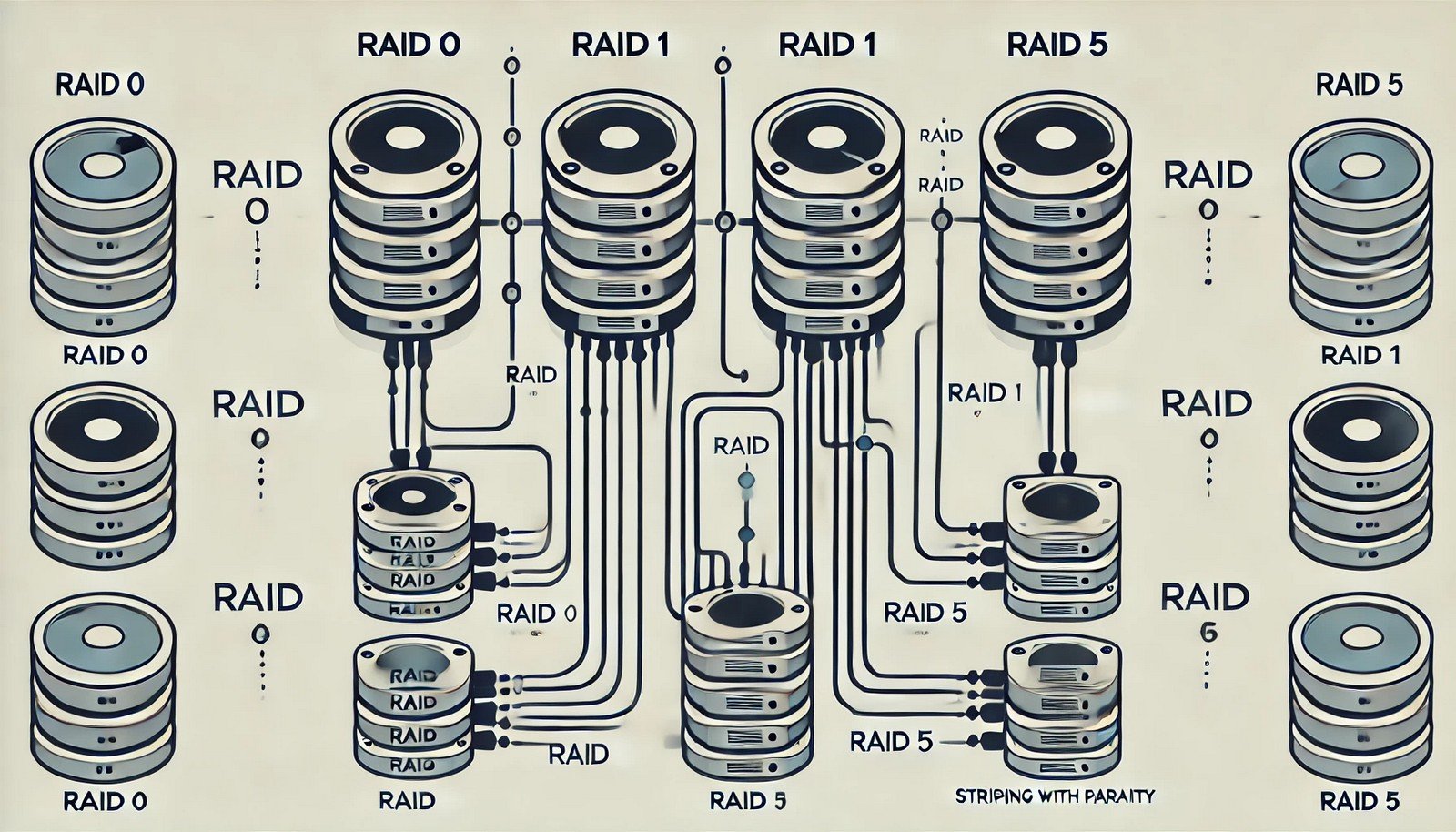RAID Levels
 (Representational Image | Source: Dall-E)
(Representational Image | Source: Dall-E)
Quick Navigation:
- RAID Levels Definition
- RAID Levels Explained Easy
- RAID Levels Origin
- RAID Levels Etymology
- RAID Levels Usage Trends
- RAID Levels Usage
- RAID Levels Examples in Context
- RAID Levels FAQ
- RAID Levels Related Words
RAID Levels Definition
RAID (Redundant Array of Independent Disks) is a data storage technology that enhances performance, reliability, or both by combining multiple physical drives into a logical unit. Different RAID levels define varying configurations of data striping, mirroring, and parity.
RAID Levels Explained Easy
RAID is like having a backup plan for your toys. Some copies are stored safely, while others come with instructions on how to rebuild them if lost. It ensures data safety and faster retrieval.
RAID Levels Origin
Introduced in 1987 by researchers at UC Berkeley, RAID proposed using multiple low-cost disks to improve storage reliability and performance over expensive single-drive solutions.
RAID Levels Etymology
The term "RAID" stands for "Redundant Array of Independent Disks," emphasizing reliability and multiple disks working as a unit.
RAID Levels Usage Trends
RAID is prevalent in enterprise storage and cloud solutions. While SSDs and cloud redundancy have reduced dependency, RAID remains essential in high-availability environments.
RAID Levels Usage
- Formal/Technical Tagging:
- Data Storage
- Enterprise Computing
- Fault Tolerance - Typical Collocations:
- "RAID 5 configuration"
- "RAID array failure"
- "RAID mirroring for redundancy"
- "RAID controller settings"
RAID Levels Examples in Context
- A company uses RAID 10 for database reliability.
- Photographers prefer RAID 1 for data backup.
- Data centers implement RAID 5 for efficiency and redundancy.
RAID Levels FAQ
- What is RAID used for? RAID improves data reliability and performance by combining multiple drives.
- What are common RAID levels? RAID 0, 1, 5, 6, and 10 are most commonly used.
- Which RAID level provides the best redundancy? RAID 1 and RAID 10 offer the highest redundancy.
- Can RAID protect against all data loss? No, RAID protects against drive failures but not accidental deletion or corruption.
RAID Levels Related Words
- Categories/Topics:
- Data Redundancy
- Storage Virtualization
- Enterprise Storage Solutions
Did you know?
RAID 6 can survive up to two simultaneous disk failures, making it ideal for high-reliability environments.
PicDictionary.com is an online dictionary in pictures. If you have questions or suggestions, please reach out to us on WhatsApp or Twitter.Authors | Arjun Vishnu | @ArjunAndVishnu

I am Vishnu. I like AI, Linux, Single Board Computers, and Cloud Computing. I create the web & video content, and I also write for popular websites.
My younger brother, Arjun handles image & video editing. Together, we run a YouTube Channel that's focused on reviewing gadgets and explaining technology.



Comments powered by CComment